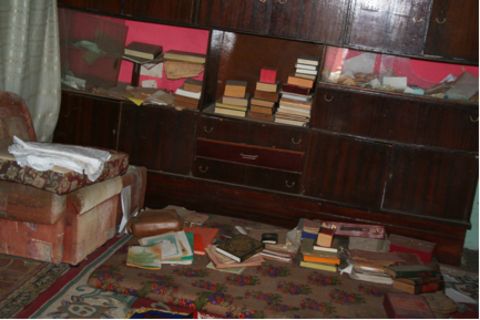Ajami in the Senegambia
by Fallou Ngom
Serigne Mouhamadou Masokhna Lo's Wolof Community
Background about Wolof
 Wolof is a major lingua franca in the Senegambian sub-region. It is part of the Northern West Atlantic branch of the Niger-Congo phylum. It is spoken by the overwhelming majority of Senegalese people either as a first or second language in both urban and rural areas. It is also spoken in the neighboring countries of The Gambia and Mauritania. The language is widely used in commerce, daily communication in most urban areas in the Senegambian region and in the media. Some of the major linguistics features of the language are its rich verbal morphology, its different focus systems and its eight noun class system. The Senegalese variety is also known for its geminates, its centralized vowel 'ё', and the heavy Arabic and French lexical influence (the official language of the country). In contrast, the Gambian variety exhibits strong influence from Mandinka (the major language in the country), simplifications of Senegalese Wolof geminates and syllable structure, the replacement of the centralized vowel 'ё' with 'u', and heavy lexical influence from English (the official language of The Gambia).
Wolof is a major lingua franca in the Senegambian sub-region. It is part of the Northern West Atlantic branch of the Niger-Congo phylum. It is spoken by the overwhelming majority of Senegalese people either as a first or second language in both urban and rural areas. It is also spoken in the neighboring countries of The Gambia and Mauritania. The language is widely used in commerce, daily communication in most urban areas in the Senegambian region and in the media. Some of the major linguistics features of the language are its rich verbal morphology, its different focus systems and its eight noun class system. The Senegalese variety is also known for its geminates, its centralized vowel 'ё', and the heavy Arabic and French lexical influence (the official language of the country). In contrast, the Gambian variety exhibits strong influence from Mandinka (the major language in the country), simplifications of Senegalese Wolof geminates and syllable structure, the replacement of the centralized vowel 'ё' with 'u', and heavy lexical influence from English (the official language of The Gambia).
Scholar's Materials
Scroll down to see Community Image Gallery
Background information about Wolof from Diourbel
Linguistic features of Wolof from Diourbel
| << Previous | | 1 of 10 | | Next >> |
Serigne Massokhna Lo's living room
(July 2006)Arabic and Wolofal books found in Serigne Massokhna Lo's living room. He was writing in this room the day of the interview.

